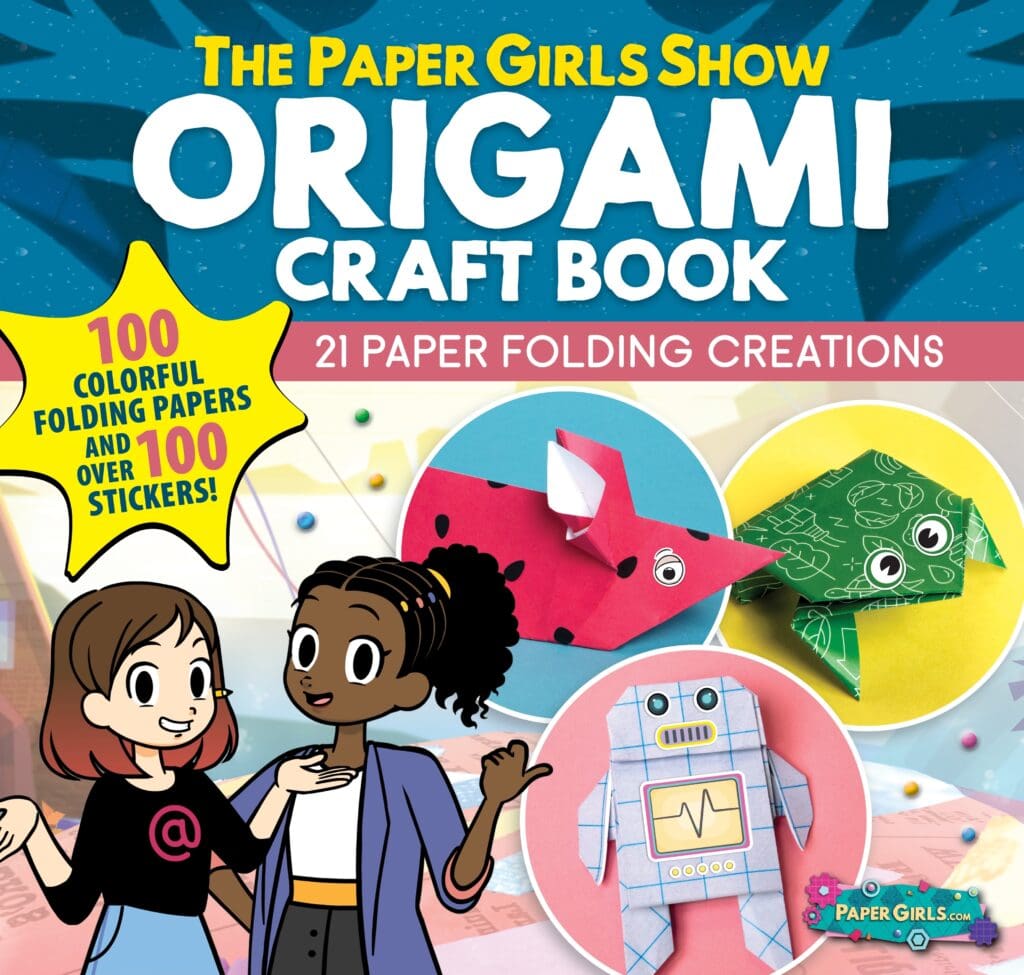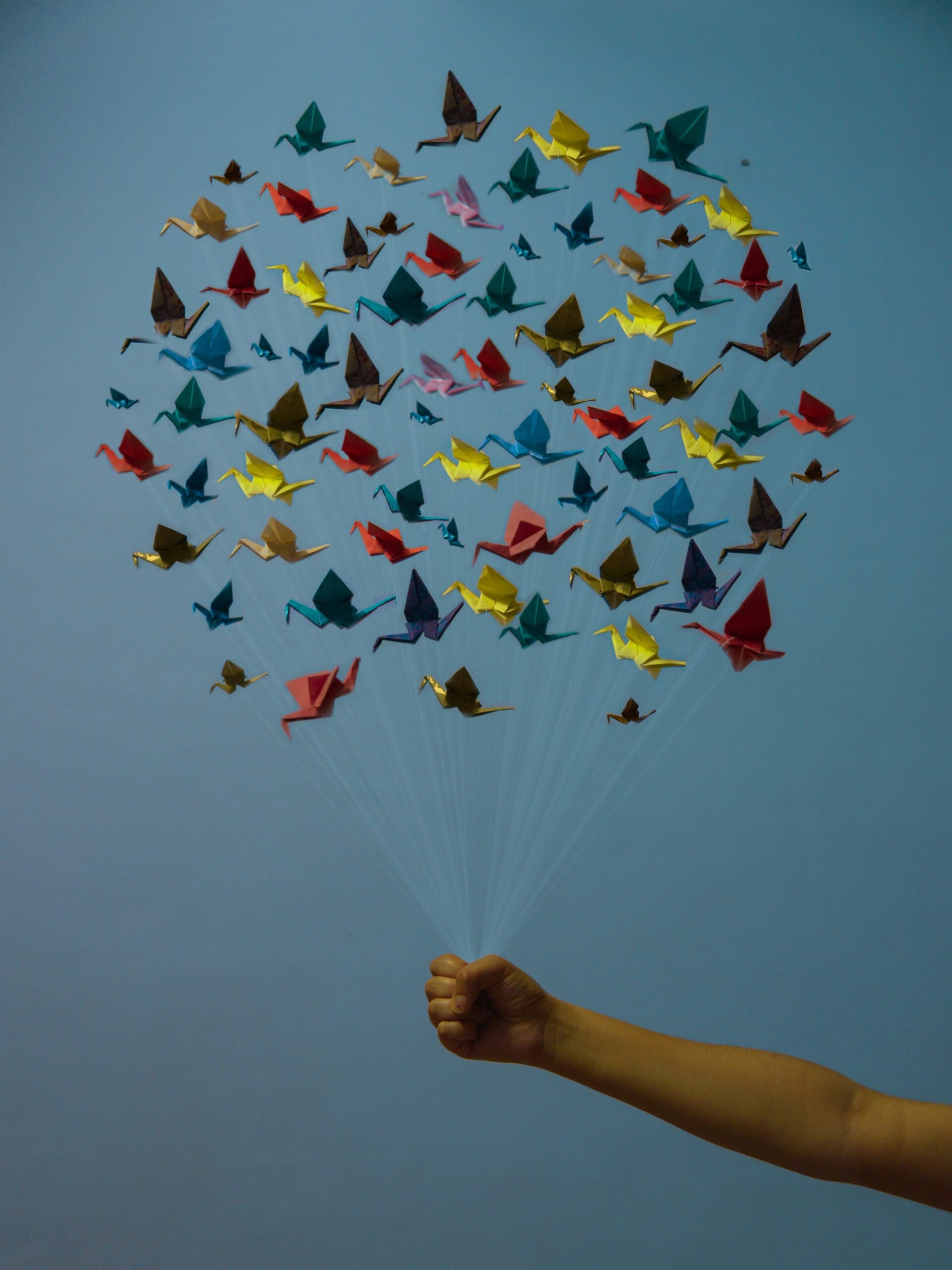In a digital era where children often spend more hours with screens than in classrooms or asleep, there’s an urgent need to shift the narrative and empower our young minds to be creators, not just consumers. Fox Chapel recognizes this challenge and is proud to introduce The Paper Girls Show: Origami Craft Book as an engaging alternative to ready-made digital entertainment. As an extension of the multi-award-winning animated series The Paper Girls Show (Kidscreen, MIPTV, 4 stars from Common Sense Media), the book weaves together vibrant characters and interactive paper crafts, complemented by accessible videos that invite children to roll up their sleeves and dive into making.

The Paper Girls Show: Origami Craft Book transforms screen time into a creative journey, empowering kids to explore their imagination, enhance STEAM abilities, and develop problem-solving skills through the joy of origami. We chatted with the book and show’s producer, Olivia Levenson of Global Tinker, to learn more. —Vita Daily
Hi Olivia! Please tell us a bit about yourself to start.
I’ve been working as a children’s media producer for nearly a decade since graduating from the University of Southern California’s School of Cinematic Arts. I co-founded Global Tinker, a multi award-winning children’s media company based in NY/LA, and The Paper Girls Show is our first animated series. We’re very different from most media companies as we actually want kids to spend less time on screens and more time creating in the real world!
In a digital era where children often spend more hours with screens, why is there an urgent need to shift the narrative and empower our young minds to be creators, not just consumers?
Children are spending upwards of 6-7 hours a day in front of screens, primarily in a passive capacity. There’s an urgent need to shift this narrative, as 90% of a child’s brain development is complete by age 7, so what a child does in the early years is crucial in forming their lives. That’s why we take a contrarian approach to media and use screens to promote creativity through books, hands-on making, and real world activities. In other words: 6 minutes of screen time should equal 60+ minutes of real-world time.

Tell us about the book, The Paper Girls Show: Origami Craft Book. What was the inspiration, what’s the message, who’s it for?
The Paper Girls Show: Origami Craft Book is a creative extension of the award-winning animated series, The Paper Girls Show, featuring two best friends – “fashionista” Reese and “techie” Caily – who explore an imaginative world of paper crafting and origami. The series was actually inspired by MIT’s Dr. Seymour Papert and his Constructionist theory of learning which says kids learn most when making things in the real world. We worked hard to create a show that’s as fun as any of the popular ones out there, but actually inspires children’s creativity and problem-solving skills with paper! Our publishers, Fox Chapel, did an excellent job reflecting this in the book, which is intended for all kids ages 5+ and their parents and caretakers to enjoy and fold together.
How does The Paper Girls Show: Origami Craft Book transform screen time into a creative journey, and empower kids to explore their imagination, enhance STEAM abilities, and develop problem-solving skills?
In creating ‘The Paper Girls Show: Origami Craft Book,’ we Fox Chapel took a step back and tried to reimagine how children interact with screen time – through a book! It hopefully acts as a bridge between digital and hands-on learning. From robotics to a growth mindset, the book serves as a springboard for STEAM exploration in a playful and engaging way. As kids navigate through the origami projects, they learn to tackle challenges, adapt to mistakes, and collaborate – all of which nurtures a mindset that values persistence, creativity, and problem-solving. This is more than just an origami book; it’s a unison of storytelling and educational craftin that emphasizes creativity, STEM skills, and mindfulness.
What are your top tips when it comes to transitioning children from passive screen consumption to active, imaginative creation?
This is a hugely important question! Here are my top tips:
- Connect screen time with real world activities: Use the themes, characters, and stories kids see on screen as a springboard for creative activities. For example, if your child watches a nature documentary, follow it up with a related art project or nature walk.
- Leverage screen time as a tool, not a crutch: Encourage kids to use screens for finding inspiration, learning through tutorials, or sharing their own creations, rather than just for watching content. There’s a lot of good content but you have to work with kids to show them how to use it actively.
- Encourage family creativity: Our publishers worked really hard to design a book that’s not just for kids but fun for the whole family, inspiring parents and caregivers to join in on the making. By crafting together, we believe you can set a powerful example, showing that creativity and collaboration are valuable and enjoyable parts of everyday life.
What are the benefits of origami and paper crafts in enhancing mindfulness, fine motor skills and concentration among young learners?
There are numerous benefits but in short, it’s really a combination the following:
- Mindfulness and concentration: As kids focus on folding and crafting, they’re drawn into the moment, which is a peaceful break from the constant digital buzz. This focused, quiet activity is a form of meditation, helping to calm their minds.
- Fine motor skills: Handling paper and making precise folds enhances hand-eye coordination and dexterity – skills that are essential for everyday tasks.
- Confidence: Studies show that when kids make something, it boosts their confidence and self-esteem .
- Gratitude: It’s all about seeing the magic in simple things, like how a plain piece of paper can become something amazing. This kind of gratitude actually makes us more eco-conscious, showing us it’s more about making something special than just having more stuff! Also it makes them appreciate the more simple things in life rather than expensive gifts. In that sense, origami is the gift that keeps on giving!
Can you suggest some effective approaches to fostering a growth mindset and the value of learning from mistakes in child development?
The Paper Girls Show and Origami Craft Book is all about mistakes – in fact, the animated series has a popular song titled “The Mistakes Song” with the following mantra: “Mistakes are what you make on the way to something great!”. To effectively foster a growth mindset and teach the value of learning from mistakes in children, here are three key approaches:
- Emphasize effort over achievement: Focus on praising children’s effort, persistence, and problem-solving strategies rather than just their successes. This helps them value the learning process and understand that effort leads to improvement.
- Embrace mistakes: Frame mistakes as natural and valuable parts of the learning process. Encourage children to see errors as opportunities to learn and grow, and share examples from your own experiences to illustrate this point.
Teach flexibility and adaptability: Encourage children to approach tasks in different ways and to be open to trying new things if they hit a stumbling block. This helps them understand that there are many paths to accomplishing their goals.
Personal question: what’s your favourite thing to create, origami-cally speaking?!
My favorite origami project is probably the ‘Personalized Picture Frame’. I have a Polaroid camera at home that I use to snap various shots – could be of my dog, a delicious meal, or just something that makes me laugh. After taking these pictures, I’ll fold an origami frame for each one. It’s a fun way to display these moments, either by gifting them to friends or placing them on my desk for a personal touch.

Be the first to comment